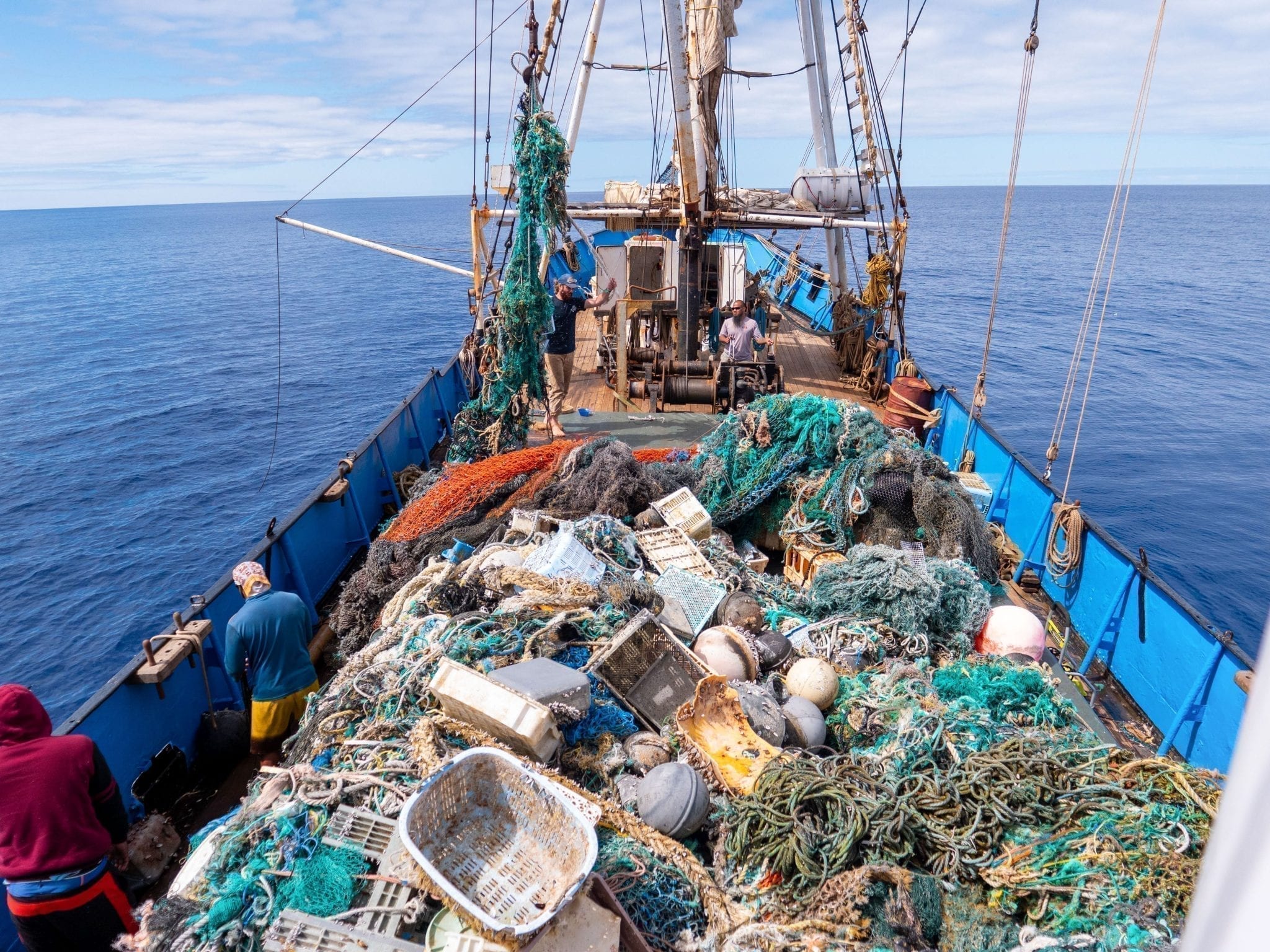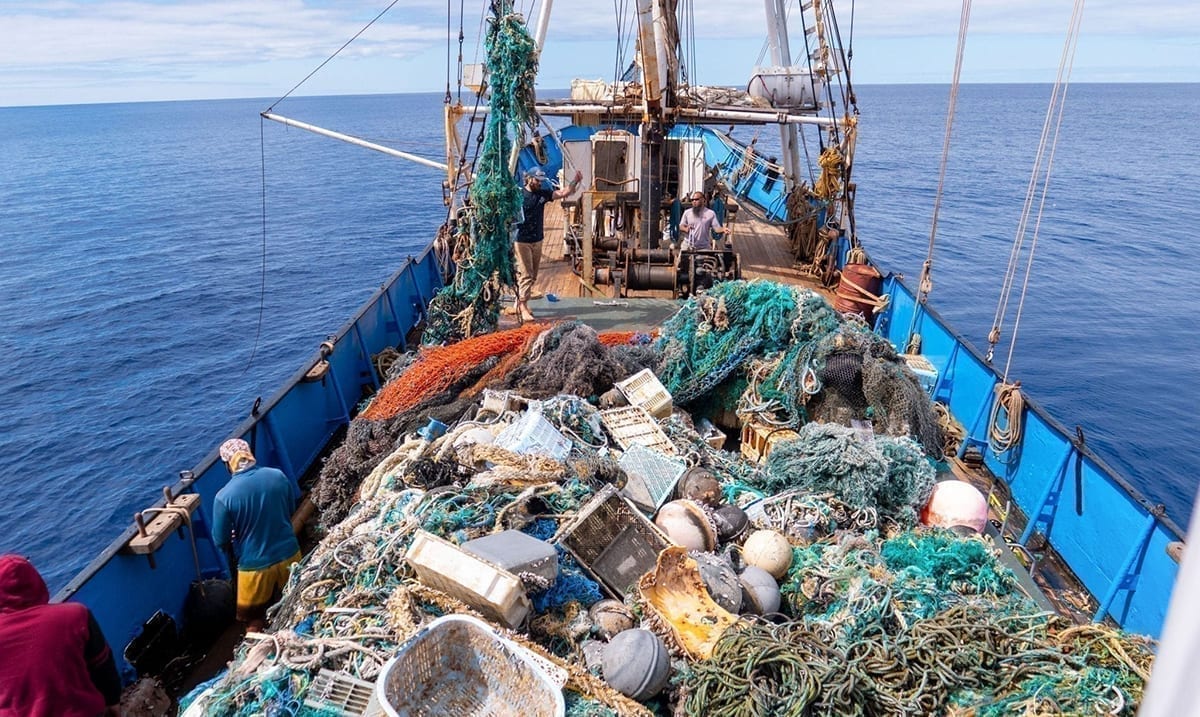In recent times a project aimed at cleaning up our oceans, specifically the Pacific where the Great Pacific Garbage Patch is has been underway and it’s seen great success. Within a mere 48-day expedition OVI (the Ocean Voyages Institute) was able to do the seemingly impossible.
OVI managed to double their previous record from their 25-day trip this time around and well, have managed to show the world the ‘largest open ocean clean-up in history.’ Not only is this record-setting but it is also an amazing thing for the animals within the ocean as well. While there is still a lot of waste that needs to be removed, this is pushing things in the right direction big time.
OVI wrote as follows on their website covering this voyage:
HONOLULU, HI — June 23, 2020 – Ocean Voyages Institute’s marine plastic recovery vessel, S/V KWAI, docked at the port of Honolulu today, after a 48-day expedition, successfully removing 103 tons (206,000 lbs.) of fishing nets and consumer plastics from the North Pacific Subtropical Convergence Zone, more commonly known as the Great Pacific Garbage Patch or Gyre.
Establishing its lead in open ocean clean-up, Ocean Voyages Institute has set a new record with the largest at sea clean-up in the Gyre to date, more than doubling its own results from last year.
“I am so proud of our hard working crew,” says Mary Crowley, founder and executive director of Ocean Voyages Institute. “We exceeded our goal of capturing 100 tons of toxic consumer plastics and derelict ‘ghost’ nets, and in these challenging times, we are continuing to help restore the health of our ocean, which influences our own health and the health of the planet.”
Crowley adds: “The oceans can’t wait for these nets and debris to break down into microplastics which impair the ocean’s ability to store carbon and toxify the fragile ocean food web.”
Known as the “Ghost Net Buster,” Crowley is renowned for developing effective methods to remove significant amounts of plastics out of the ocean, including 48 tons (96,000 lbs.) of toxic plastics during two ocean clean-ups in 2019, one from the Gyre and one from the waters surrounding the Hawaiian islands.
“There is no cure-all solution to ocean clean-up: It is the long days at sea, with dedicated crew scanning the horizon, grappling nets, and retrieving huge amounts of trash, that makes it happen,” says Locky MacLean, a former director at Sea Shepherd and ocean campaigner in marine conservation for two decades.

(Image Credit: OVI – The Ocean Voyages Institute)
The group of people working on this are working hard to accomplish all they can in this area and clean out the patch of garbage as best they can. From here this garbage will be unloaded, sorted through, and properly disposed of rather than dumped into the ocean as it was initially. Next year the group plans to possibly have more vessels operating for several months and to get much more debris on that trip if all goes as planned.
While these people would love to reach other plastic polluted parts of the world as well to help, that will take some time. Right now, these efforts are huge, and they will in the long-run make a big difference as things continue to progress. As you can see in the picture above netting is something that tends to be left in the ocean a lot and well, netting like this can kill thousands of marine animals each year and does. Seals and other creatures get stuck in this netting and from there they wait to die and struggle all the while, you can actually click here to see an example of that.
These efforts are amazing and we hope those working on this project continue to break records and set records. That all being said, you can do your part as well. Make sure you’re recycling what you can and that when you are out on the beach or in nature as a whole you’re not throwing your waste wherever you please.

